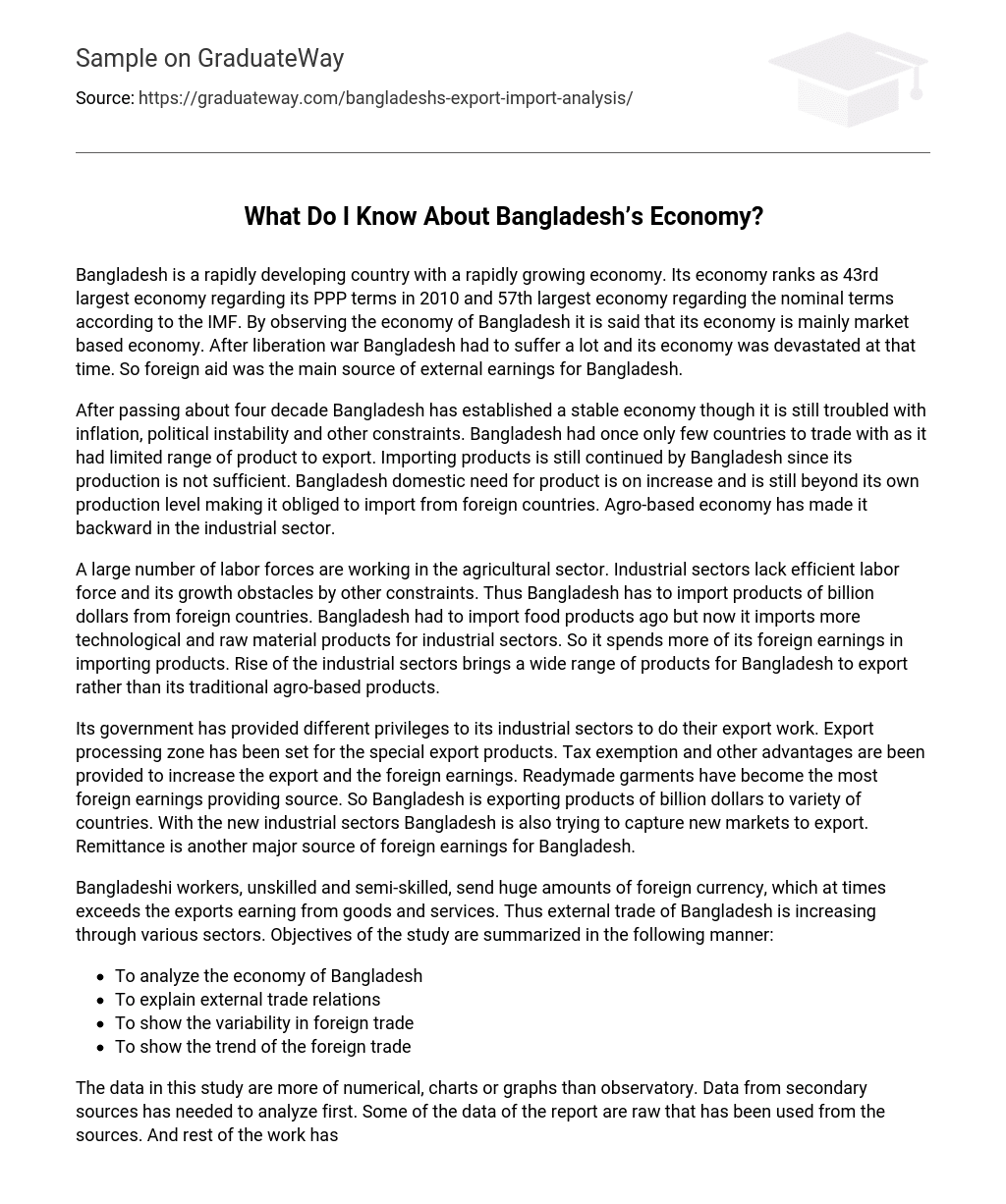Bangladesh is a rapidly developing country with a growing economy. In 2010, its economy ranked as the 43rd largest in terms of PPP and the 57th largest in nominal terms according to the IMF. The economy of Bangladesh is mainly market-based. After the liberation war, Bangladesh suffered greatly and its economy was devastated. As a result, foreign aid became the main source of external earnings for Bangladesh.
After four decades, Bangladesh has established a stable economy, although it still faces challenges such as inflation, political instability, and other constraints. In the past, Bangladesh had limited trading partners due to its narrow range of exportable products. Even now, the country continues to import goods because its production is not sufficient to meet domestic demand which is increasing beyond its own production level. As an agro-based economy, Bangladesh lags behind in the industrial sector.
A large number of laborers work in the agricultural sector, while the industrial sector lacks an efficient workforce due to various constraints. As a result, Bangladesh has to import billions of dollars’ worth of products from foreign countries. Although it used to mainly import food products in the past, now it imports more technological and raw material products for its industries. Consequently, Bangladesh spends a significant portion of its foreign earnings on importing these goods. However, with the growth of the industrial sector comes a wider range of exportable products for Bangladesh beyond its traditional agro-based ones.
Bangladesh’s government has provided various privileges to its industrial sectors for their export work. Special export processing zones have been established for specific products, with tax exemptions and other advantages provided to increase exports and foreign earnings. Readymade garments have become the primary source of foreign earnings, resulting in billions of dollars worth of exports to a variety of countries. With new industrial sectors emerging, Bangladesh is also seeking to capture new markets for its exports. Additionally, remittances are a significant source of foreign earnings for the country.
Bangladeshi workers, both unskilled and semi-skilled, send significant amounts of foreign currency back home. In fact, this amount sometimes exceeds the earnings from exports of goods and services. As a result, Bangladesh’s external trade is increasing across various sectors. The objectives of this study can be summarized as follows:
- To analyze the economy of Bangladesh.
- To explain external trade relations.
- To demonstrate the variability in foreign trade.
- To illustrate the trend of foreign trade.
The data in this study consists mainly of numerical values, charts, and graphs rather than observations. Data from secondary sources needed to be analyzed first. Some of the report’s data is raw and was used directly from the sources, while the rest required observation. The base year for calculating growth was 2002-03.
Bangladesh followed a socialist economy by nationalizing all industries, which resulted in slow growth in producing experienced entrepreneurs, managers, administrators, engineers and technicians. This led to disruptions in both external and internal trades. However, after 1975, measures were taken to develop new industrial capacity and rehabilitate the economy. Over time, Bangladesh began to stabilize its economy with agriculture and manufacturing being the major economic sectors. These sectors also facilitate external trade.
Bangladesh has historically run a large trade deficit, which has been financed largely through aid receipts and remittances from workers overseas. Imports are still the only key to meeting the domestic demand for goods. With an agro-based economy, Bangladesh was only able to export agro-products in the past. However, the scenario has changed now as Bangladesh has started exporting industrial products such as ready-made garments, leather goods, pharmaceuticals etc. Exporting products gives Bangladesh the key to move forward with foreign earnings. However, problems still exist as Bangladesh has not achieved political stability or resolved various issues.
The effectiveness of different measures is being lost due to the decreasing investment in the economy. Domestic investments are insufficient, and foreign investments are being hindered by government laws. Therefore, Bangladesh’s economy requires visionary goals to survive in the current global depression.





